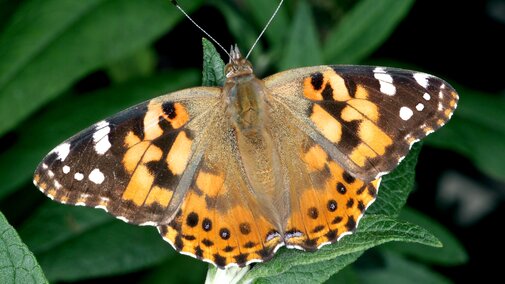Many people are commenting on the high number of painted lady butterflies in Nebraska. The recent increase is the result of the many thistle caterpillars (the immature stage of these butterflies) seen in soybean fields across Nebraska earlier in the summer.
Painted lady butterflies move north during the summer, but may stay in Nebraska for a while longer and continue to lay eggs in soybeans. The best recommendation is to continue to scout soybeans for thistle caterpillars and other defoliating insects, such as Japanese beetles, grasshoppers or other caterpillars, and only treat if threshold levels are reached.
Spraying now to kill butterflies is not recommended. Adults are less susceptible to insecticides than larvae, and the butterflies in your field today may move on before they lay eggs. Base insecticide applications on the presence of insects feeding in your field and defoliation levels expected to exceed 30% on vegetative stage soybeans, and 20% on reproductive stage soybeans.
Spraying insecticides before threshold levels are reached can have negative effects. You may not get an economic return from increased yield if insects are not present at threshold levels. Also, spraying now can greatly reduce the many beneficial predatory and parasitic insects that help control many soybean insects. Spraying before thresholds are reached may allow increased survival of later season pests, such as soybean aphids, caterpillars, and spider mites.

